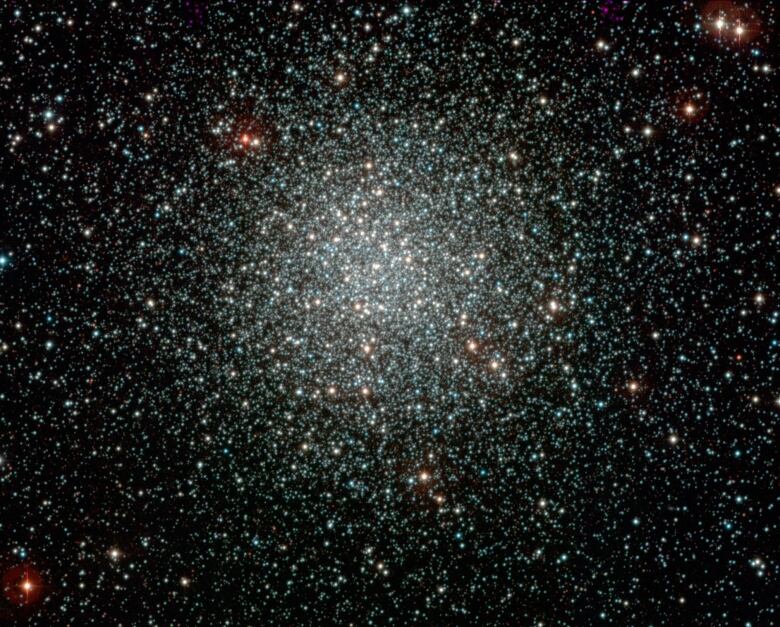Hidden black hole caught flinging star back and forth in distant cluster
Black hole believed to be 4 times more massive than sun

It was a mystery. A star in a massive cluster at the outer edge of our galaxy was moving erratically. Every 167 days, the star would be flung outwards and then inwards again at speeds of up to several hundred thousand kilometres per hour.
Astronomers followed the breadcrumbs and found a surprise: a black hole.
Scientists are excited by the discovery. It marks thefirst time a black hole the remains of the death of a large star has been found by directly observing its gravitational effect on a star.
Globular clusters are ancient nearly 10 billion years old (our universe is thought to be about 13.8 billion years old). They contain tens of thousands or even millions of stars in a tight sphere. Our own galaxy is home to more than 150, though some galaxies can contain thousands of these clusters.
However, astronomers believed that black holes couldn't exist in these types of clusters.
"In the beginning of a globular cluster [formation], there are many black holes made, and then there's a mechanism to throw them out,"BenjaminGiesers, lead author of the study published Wednesday in the journal Monthly Notices of the Royal Astronomical Society, told CBC News.

Astronomers have through indirect observation found a few black holes hidden in these clusters. They're now realizing that they may have to reassess what they know about globulars.
"The idea is that we just see the tip of the iceberg currently. So now we'll look in more detail in our data and try to find more," said study co-author Stefan Dreizler.
- Supermassive black hole from early universe is farthest ever found
- Black hole as massive as 17 billion suns surprises astronomers
Giesers studies the movement of binary stars a pair of stars orbiting a common centre in these clusters. Using data collected by the European Southern Observatory's Multi Unit Spectroscopic Explorer (MUSE) instrument in Chile, he noticed the strange behaviour of the star.
The star isn't very different from thesun: it's 0.8 times its mass, but far older. As for the black hole, it's four times more massive and inactive: it isn't gobbling up any nearby matter.
It's likely the star that created the black hole was 20 times more massive than the sun. The existing star likely migrated inward where the pairhave continued to orbit one another and will for millions of years to come,the researchers say.
"Black holes are really hard to see, so when we find evidence that one exists, we get really excited," Alison Sills, a professor of physics and astronomy at McMaster University in Hamilton, Ont., told CBC News about the discovery.
Sills, who was not part of the research, saidshe's happy that the discovery is another piece that will teach them more about globular clusters and their evolution, particularly about how some black holes manage to avoid being kicked out of globular clusters.
And, of course, she said that once again, it teaches them that there is still so much in the universe yet to beunderstood.
"Even if the result is something we sort of expect, there's always a little tweak, where it's like 'Oh yeah,' " she said. "It's fun."












_(720p).jpg)


 OFFICIAL HD MUSIC VIDEO.jpg)
.jpg)



























































































